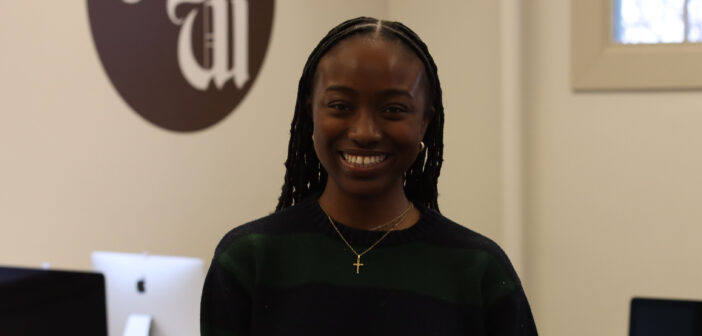As someone who is from New York City, there are certain things that just make sense to me. Like, don’t make eye contact with the creepy guy on the train platform, jay-walking isn’t illegal and hearing “excuse me” is a luxury.
Growing up, my summers at home consisted of hearing my neighbors blast Soca music until 5 a.m. and watching the boys on my block light fireworks way past the Fourth of July.
This is the New York City that I grew up in. This is the New York City that makes sense to me. It’s a place where daily life is so chaotic that ignoring screaming strangers is considered the norm, a place where the population is so diverse that you’ll always be surrounded by people who don’t share your experiences and a place so rich in culture that you can’t help but feel like you have taken a piece of it with you everywhere you go.
But, as I come home from college every break, the New York City that I remember is slowly becoming unrecognizable.
The apartment buildings that housed my neighbors have been torn down and replaced with luxury high-rise buildings. Grocery stores that I frequented with my family are long gone — replaced with construction sites and “For Rent” signs. The liveliness of my block has slowly lost its spark.
There is no longer Soca music until 5 a.m., as my Carribean neighbors have been replaced by new families who prefer a quiet neighborhood after 10 p.m. This is not the New York City that I grew up in.
What’s to blame for all of this change? Gentrification.
According to Merriam-Webster, gentrification is defined as “a process in which a poor area (as of a city) experiences an influx of middle-class or wealthy people who renovate and rebuild homes and businesses and which often results in an increase in property values and the displacement of earlier, usually poorer residents.”
In New York City, gentrification typically looks like an increase in rent, expulsion of residents, decline in neighborhood diversity and a decrease in small businesses.
Who’s to blame for this gentrification? Well, some would argue that there is nobody to blame and that gentrification is a natural thing, especially in cities that are always evolving.
However, I don’t believe this to be completely true. When I think of the increased gentrification that has occurred in the past three years, my brain points to TikTok.
Throughout the COVID-19 pandemic, a large number of people have moved to the city.
Data from StreetEasy shows that the number of contracts signed in Brooklyn grew by 316% from August 2010 to August 2021.
As I look at this data, I can’t help but wonder: How many of these people are TikTok influencers?
I see influencers on my For You Page depict a luxurious life in the city. Some posts show them strutting across crosswalks with the Empire State Building behind them, strolling through parks in an expensive outfit or eating at fancy restaurants. As a result of these posts, people believe that New York City is actually like this.
But it is not.
When influencers post their luxurious lifestyles, they fail to recognize what New York City is actually all about. The city is a place where many different people come together to share their culture.
I spent my childhood growing up with kids whose parents were immigrants, just like mine. We all had a mutual understanding of what it meant to work hard to achieve our dreams, despite the chaos that was happening around us. Although times may have been hard, the lessons we learned were able to enhance our experience as people from New York.
The problem with gentrification is not only that it raises the rent, but that it also erases the culture and the stories of the residents who live there.
Who do influencers and their followers think runs New York City? The delis people rely on for their morning coffee, the restaurants people rely on for their daily takeout, the drycleaners people rely on for clean clothes.
These establishments are run by immigrants who have been here long before Tik Tok was even around. They are the same people who keep the city alive with their cultures and their stories.
These people and these establishments are the beauty that is New York City.
In a few years, I fear that the city I grew up in will look completely different from what I know due to gentrification. I fear that I will no longer be able to watch the boys on my block laugh as they play with fireworks. I fear that the home that I grew up in will no longer exist.
So, as a native-New Yorker, I have one request: before moving to this city, please consider the lives and the stories of those who were here before you.






Comment policy
Comments posted to The Brown and White website are reviewed by a moderator before being approved. Incendiary speech or harassing language, including comments targeted at individuals, may be deemed unacceptable and not published. Spam and other soliciting will also be declined.
The Brown and White also reserves the right to not publish entirely anonymous comments.